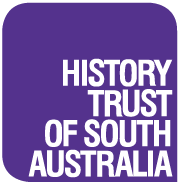The Robe Local History Group was formed in 2014 by a committed group of community volunteers and library staff with a passion for the history of Robe and its farming, fishing and holiday communities, including Nora Creina, Boatswain Point and Mount Benson. The primary aim of the group is to help manage and expand the collection held at the Robe public library.
The Robe Library collection provides insights into a small but remarkable town that has played crucial roles in Australian history. It comprises an archive made up of predominantly documents, photographs, books and oral history recordings; and an interpretative display, featuring maps, images and artefacts.
The collection covers a broad range of topics, including:
- Early explorations by Nicholas Baudin and Matthew Flinders, overlander Charles Bonney and the Secondary Towns Association.
- Colonial shipping, local shipwrecks and the export trade, with Robe handling more than £1 million worth of wool in the mid 1850s, making it one of the most significant ports on Australia’s southern coastline.
- The arrival of about 16,000 Chinese on their way to the Victorian Goldfields, in the late 1850s and early 1860s.
- The region’s rich pastoral heritage and Robe’s central role in identifying the cause of coastal disease, changing agriculture around the world.
- Australia’s first overland telegraph, connecting Adelaide and Melbourne via the Robe Telegraph Station, established by Sir Charles Todd.
- Education in colonial Australia, including the work of Australia’s first saint, Mary Mackillop, who set up a school in Robe in the late 1860s.
- Seaside holiday traditions from the 1870s when Governor Sir James Fergusson established a summer residence at Robe, to the Edwardian period when it was marketed as “the sanatorium of South Australia” and the emergence of motor camping.
- The First and Second World Wars, including information about Robe men and women who enlisted in WWI, and the little known incursion by German raider ships during World War II.
- Commercial fishing including the development of the shark liver oil industry in the 1940s and the birth at Robe of SAFCOL, the first cooperative of its kind in Australia.
- Horse racing traditions and the lives of famous Australian poet and horseman Adam Lindsay Gordon, and one of Australia’s greatest jockeys, Tom Hales.
The collection is housed in the Robe Institute. A hub of community life for almost 150 years, the State heritage registered building once held one of the finest libraries outside Adelaide. Archival material is kept in the Kathleen Browne Room which has been closed for renovations, but intends to be reinstated in the future. The Robe Institute adjoins the Robe Library and Robe Visitor Information Centre which also contains the Robe Historical Interpretive Centre.
History group volunteers are re-cataloguing it and working with a professional historian to carry out a significance assessment. They are also expanding the collection. An initial priority is oral history and recording the memories of local residents and people associated with the town’s fishing and holiday traditions.
Access to the archives is limited, however a volunteer researcher is available to help with requests.
In 2017 the Robe Local History Group began developing an app with fellow historian Kim Kelly, with help from a History Trust grant, which will allow visitors to wander through the cemetery and give themselves a self-guided audio tour.

